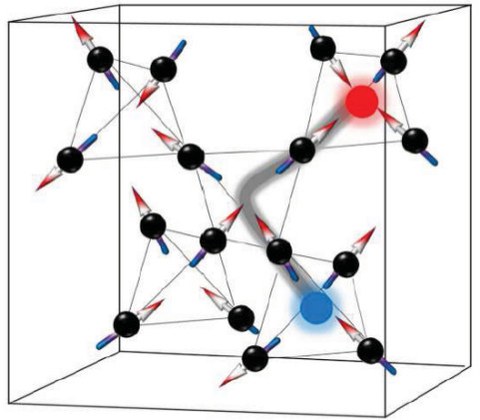Correlated Magnetism: From Frustration to Topology
Condensed-matter physics is located at the intersection of two major strands of the scientific enterprise. One is to discover the variety of phenomena – such as magnetism or superconductivity – which besides their intrinsic interest underpin much of modern technology. Another is the quest to identify the principles – such as phase transitions or elementary excitations –- according to which the world around us is organized.
A recent addition to the set of organizing principles goes under the name topology: it was recognized that materials can have global properties which lie beyond what can simply be measured locally. Magnets have played a key role for all of the above aspects. Indeed, both parts of the Physics Nobel Prize 2016 awarded for the beginnings of the field of topological condensed-matter physics centrally involved magnetic models.
The Collaborative Research Center (CRC) 1143 “Correlated Magnetism: From Frustration to Topology” is devoted to the study of a class of magnets where competing (frustrated) interactions prevent the establishment of a simple conventionally ordered state, leading to a plethora of alternative and highly non-trivial behaviors, the most remarkable of which involve either topological phases of matter or proximity to them. The CRC aims to identify, produce, and understand magnetic materials exhibiting these.
To do so, it bundles requisite expertise for an integrated research program, comprising intuitive and machine-based searches for new and promising chemical compounds; capabilities of synthesizing and characterizing these compounds as well as studying their physical properties experimentally; and finally modeling and analyzing the experiments in order to synthesize the results into a deeper understanding of the field which we call correlated magnetism.
As this field is maturing, the nature of the questions to be addressed undergoes subtle changes. Initially, questions of existence were paramount -- can a magnet, in principle, represent a phase of matter, known as a spin-liquid phase, without conventional but with a topological form of order? Nowadays, with the confidence of an affirmative answer to this question, we ask what unusual properties such a phase would exhibit -- what are its static and dynamic correlations; what is the nature of its excitations; how does it relax to equilibrium; how does it terminate when control parameters are varied; and what signatures in adjacent phases betray its proximity?
The road ahead leads through a landscape promising many surprises and unexpected discoveries. One of its destinations, edging encouragingly closer at the time of writing, is the realization of a non-Abelian quantum spin liquid. Its excitations, when spatially interchanged, do not just pick up a phase (like fermions or Abelian anyons), but in fact can change their nature in the process. Such particles are a building block for advancing the versatility of our control of the quantum world, such as in quantum information applications. In this sense, the proximity of fundamental research and functionality in the study of magnetic systems remains as close as ever, and our CRC aims to continue to advance this tradition into the future.

